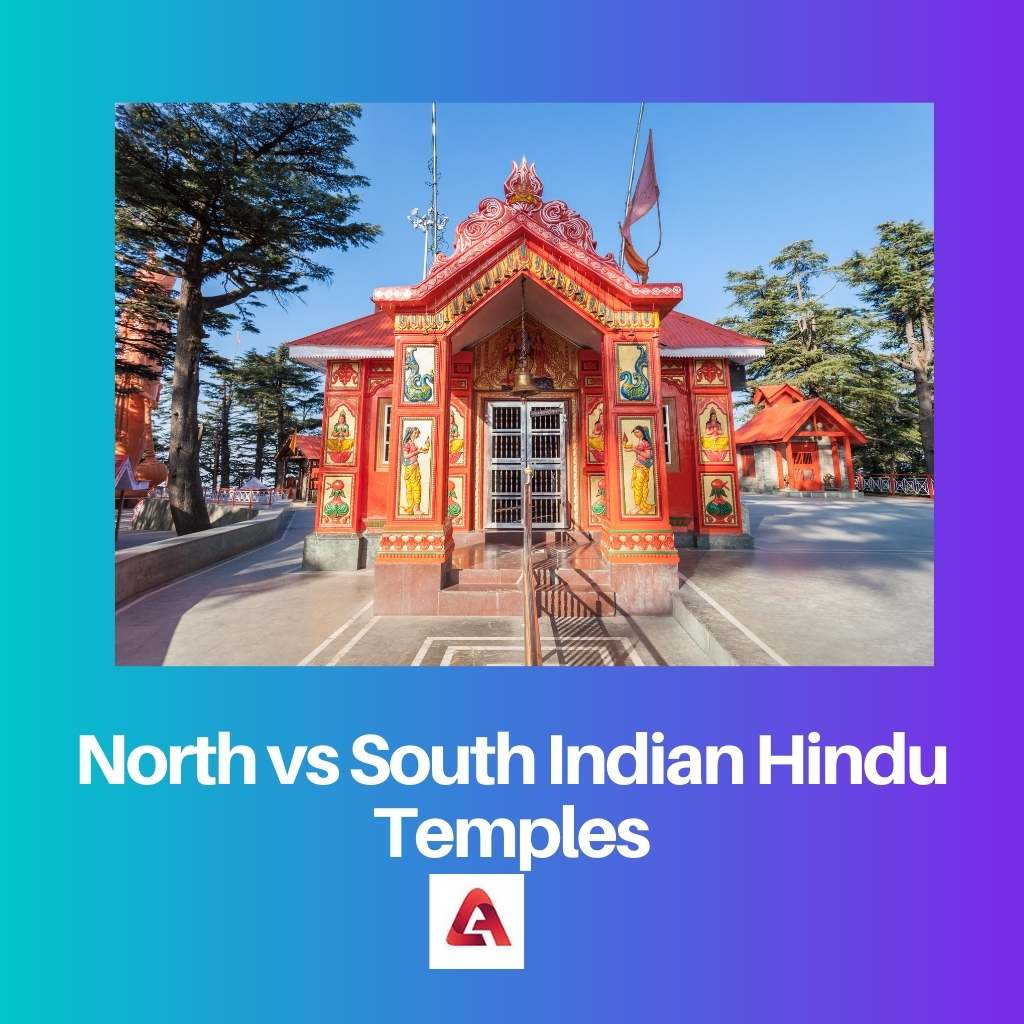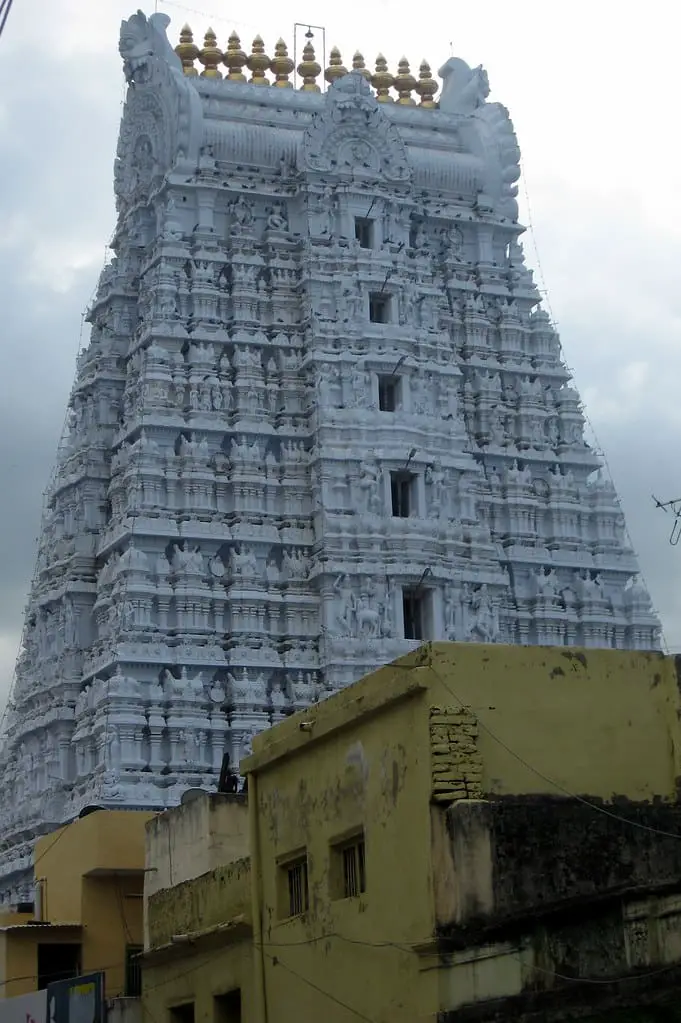Mandirs are traditional Hindu temples based on India’s ancient writings. There are a lot of temples in India, but despite being a country, we could see the same religion changing from the North of the country to the south of the country.
The architecture of temples varies with the places and gods being worshipped over there. Let’s look what are the main differences in temples from head to toe of the country.
Key Takeaways
- North Indian temples feature a tall, curvilinear tower called a shikhara, while South Indian temples have pyramid-shaped towers called vimanas.
- South Indian temples have intricately carved gopurams at the entrance, whereas North Indian temples don’t.
- North Indian temples tend to be more ornate with sculptural embellishments, while South Indian temples have larger, more expansive temple complexes.
North vs South Indian Hindu Temples
North Indian Hindu temples are larger and more elaborate, with more intricate engraving South Indian temples are more compact, with a smaller sanctum sanctorum and fewer external decorations. South Indian temples are tall, pyramid-shaped towers, while North Indian temples have a single, towering spire.

The ceremonies at North Indian temples are more easygoing. Furthermore, rite modality is inconsistent across all North Indian temples. This allows ordinary folks to touch idols.
You may do abhishekam to Shiva Lingam in Kashi; much better, you can embrace Pandurangan’s idol at Pandharpur. Because of rigorous agama, only temple priests are permitted to touch the idols and execute the ceremonies in the south.
South Indian temples adhere to a rigid agamam culture.
Agamam is a collection of texts that explain worship, temple customs, and ceremonial procedures. Saiva (for Hindu temples), Vaikanasam, and Paancharaatram are the three agamams (for Vishnu temples). Shaiva agamam is less formal and more straightforward.
Paancharatra agamam rituals are far more intricate than Vaikanasa agamam rites. Kerala temples, where tantric rites are performed, are an exception to this agamic tradition.
Comparison Table
| Parameters of Comparison | North Indian Temples | South Indian Temples |
|---|---|---|
| Architecture | The structure’s height is gradually increased, beginning with a low-rise gate and progressing to a lofty tower containing the sanctuary. | Most temple gopurams in South India are exceedingly ornate and loaded with figures. |
| Size | North Indian temples are not big but they have natural beauty. | Temples are bigger in south India. |
| Priests (Importance of saints) | Priests are important but they are not indulged as compared to south Indian temples. | Priests have very importance in south Indian temples. |
| Culture | Not all North Indian temples have the same ceremonial modalities. | Temples in South India have a strict agamam tradition |
| Rituals | People offer abhishekam to Shiva Lingam at Kashi, and much better, embrace Pandurangan’s idol in Pandharpur. | The three agamams are Saiva (for Hindu temples), Vaikanasam, and Paancharaatram (for Vishnu temples). Shaiva agamam are less formal. |
What are North Indian Hindu Temples?
Traditional ceremonies at North Indian temples are laid-back. Furthermore, not all North Indian temples have the same ceremonial modalities.
Ordinary people can even touch the idols as a result of this. You can offer abhishekam to Shiva Lingam at Kashi and embrace Pandurangan’s idol in Pandharpur.
Because of rigorous agamam, only temple priests are allowed to touch the idols and execute the rites in the south. The idols in most North Indian temples are shown very lowly, and there are no utsavar idols for processions.
In North Indian temples, white marble god representations are widespread, but in South Indian temples, black stone idols are prominent.
In addition, Tamil Nadu has a unique style of expressing Shiva in the form of a dance form known as Nataraja, which is highly significant to the Tamil people. Priests are important but not indulged compared to south Indian temples. North Indian temples are not big, but they have natural beauty.
As mentioned, temples in North India are Niagara style, giving the temples distinct visible differences from South Indian temples.
Shikhara is the most prominent feature of the design in North Indian temples; only North Indian temples have multiple shikara designs.

What are South Indian Hindu Temples?
Temples in South India have a strict agamam tradition. Agamam is a collection of books that discuss worship, temple etiquette, and rituals.
The three agamams are Saiva (for Hindu temples), Vaikanasam, and Paancharaatram (for Vishnu temples). Shaiva agamam are more clear and less formal.
Vaikanasa agamam ceremonies are significantly more complicated than Paancharatra agamam rites. This agamic practice is broken only in Kerala temples where tantric rituals are done.
All Southern Indian temples both have moolavar (stone) & utsavaridols. Moolavar is a God that lives in temples and is made of hard rock and shown in black.
Temple processions employ utsavar, which can also be carried outside the temple during festivals.
The principal deity is even depicted in certain Vishnu temples. Moolavar, Utsavar (used for processions), Yaagaberar (used in yaagams), Kauthugarand theerthaberar are the panchaperar.
Priests have very important in South Indian temples. Temples are bigger in south India. As mentioned earlier, South Indian temples are based on the Dravid style, which resembles a pyramid.
The main shape is pyramid-based, so the temple has a pillar-type design in the centre. South Indian temples don’t have more than one shikhara.

Main Differences Between North and South Indian Hindu Temples
- The structure’s height is gradually increased, beginning with a low-rise gate and progressing to a lofty tower containing the sanctuary whereas most temple gopurams in South India are exceedingly ornate and loaded with figures.
- North Indian temples are not big but have natural beauty, whereas Temples are bigger in South India.
- Priests are important, but they are not indulged as compared to south Indian temples, whereas Priests have very importance in south Indian temples.
- Not all North Indian temples have the same ceremonial modalities, whereas Temples in South India have a strict agamam tradition.
- People offer abhishekam to Shiva Lingam at Kashi, and much better, embrace Pandurangan’s idol in Pandharpur whereas The three agamams are Saiva (for Hindu temples), Vaikanasam, and Paancharaatram (for Vishnu temples). Shaiva agamam are less formal.




